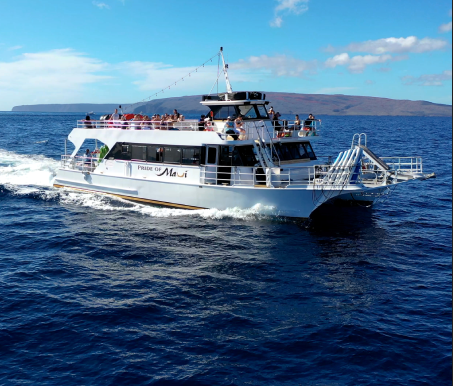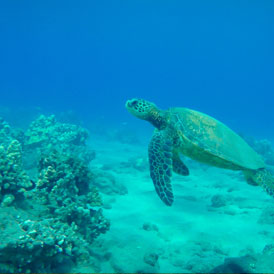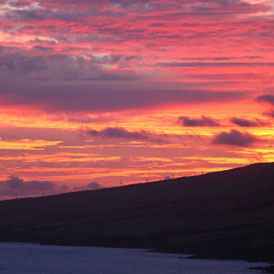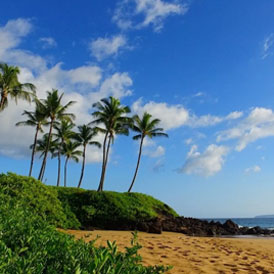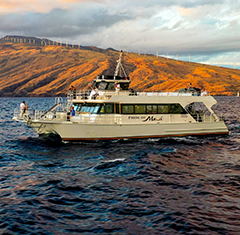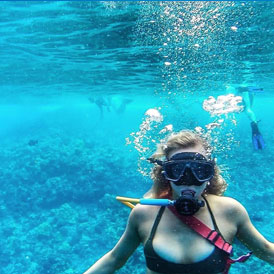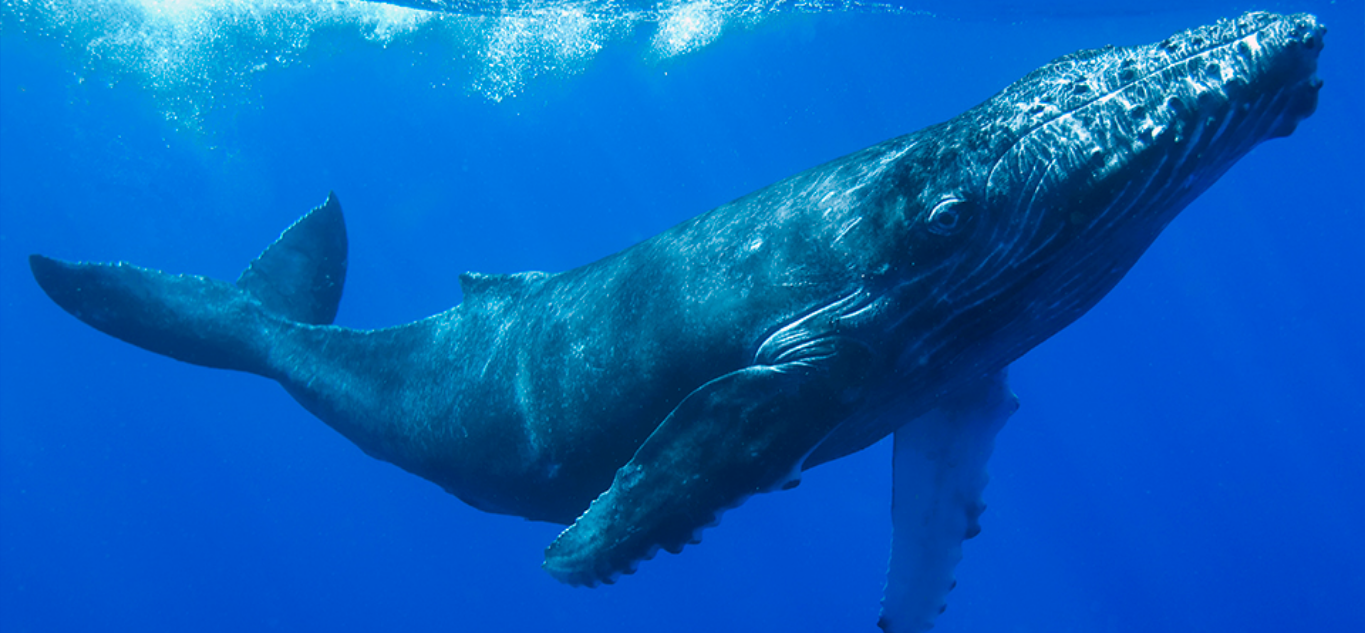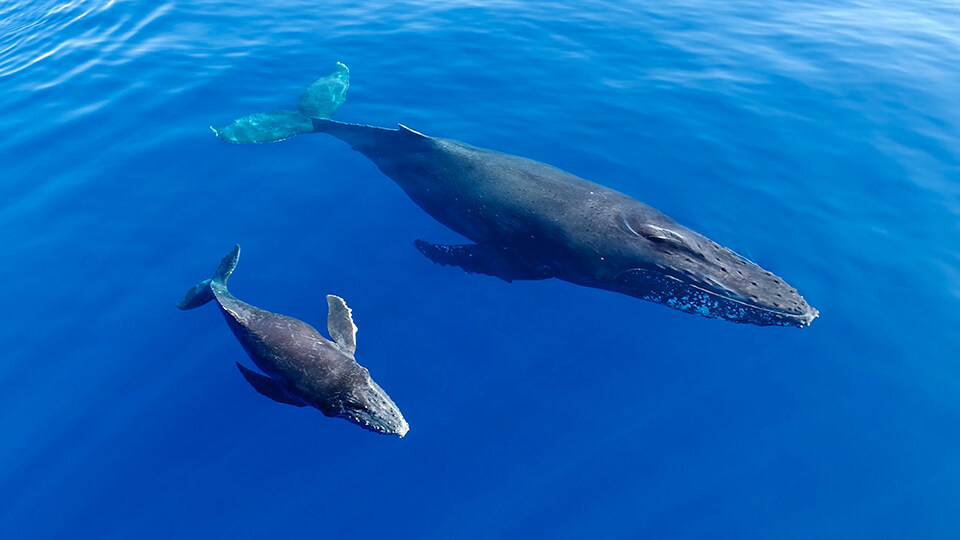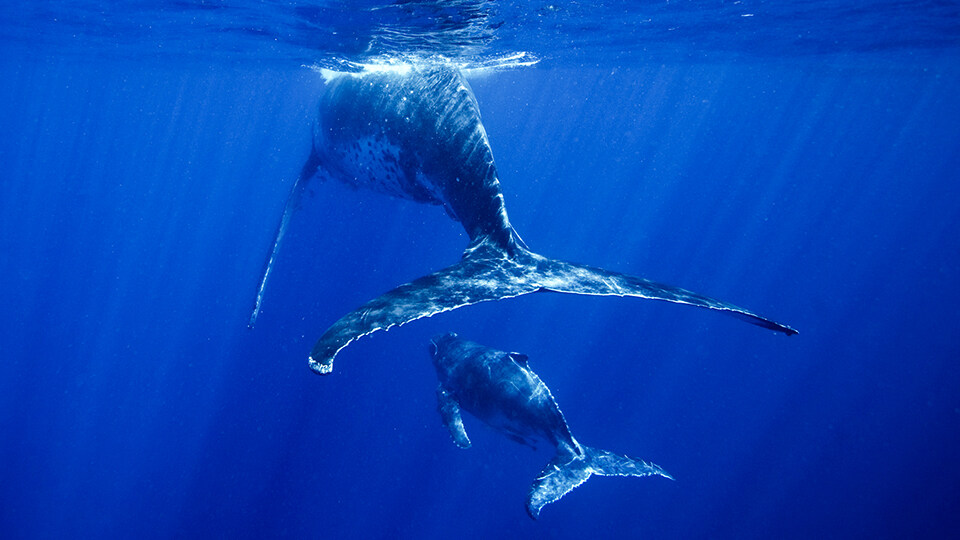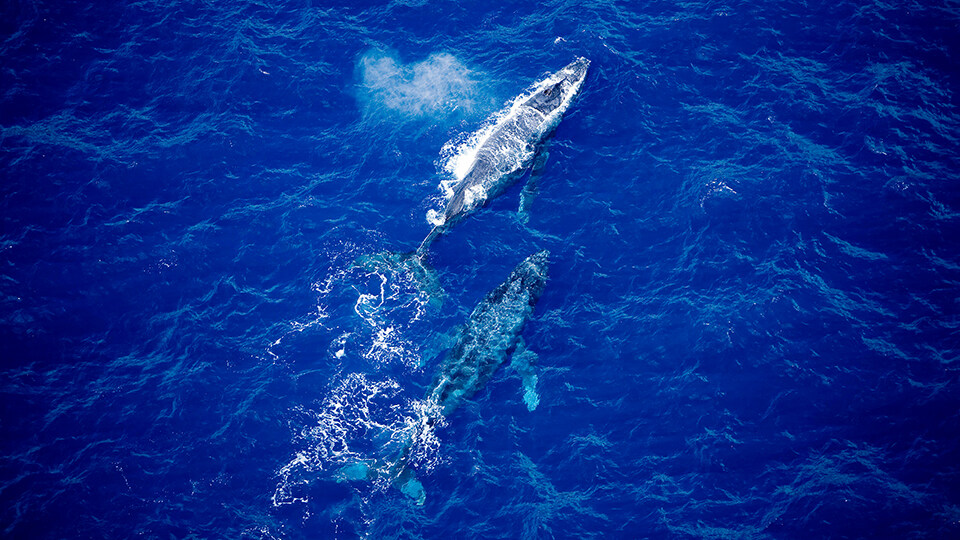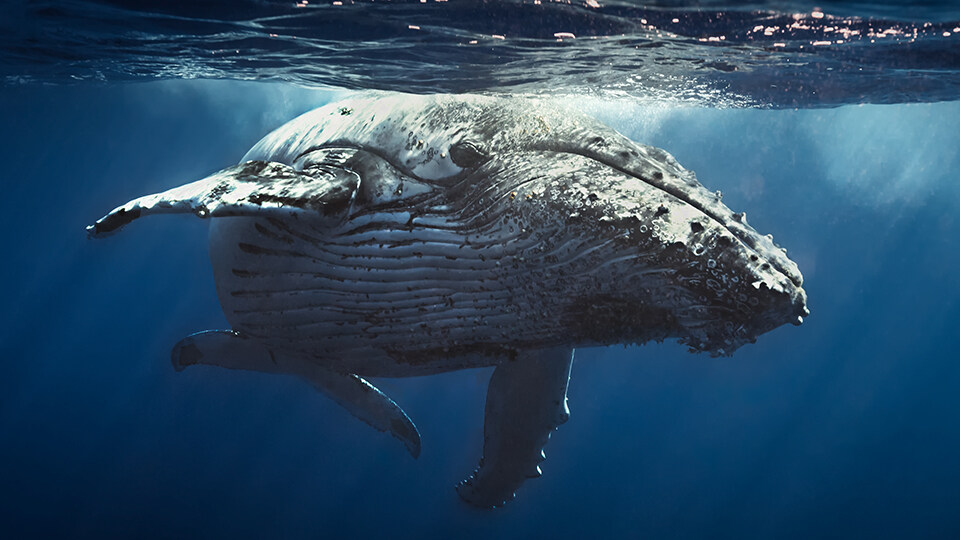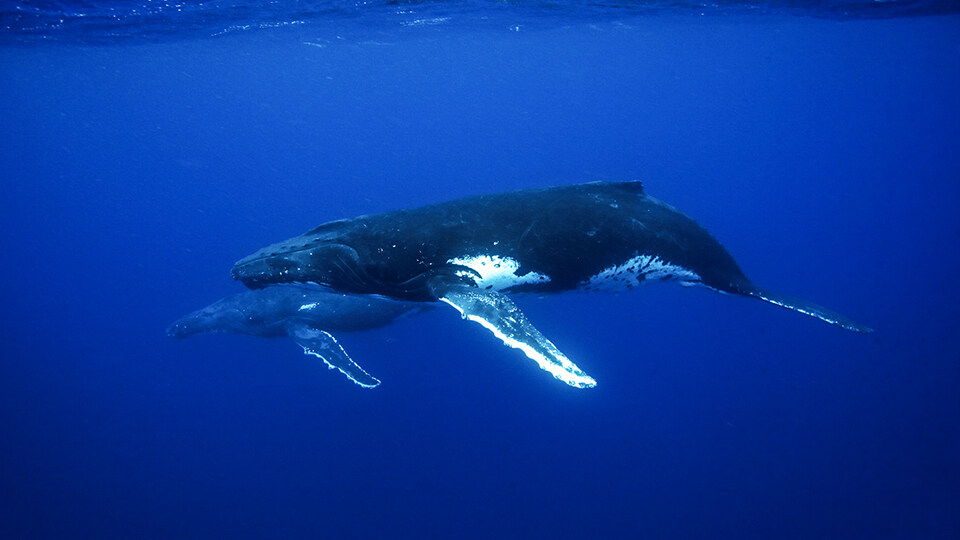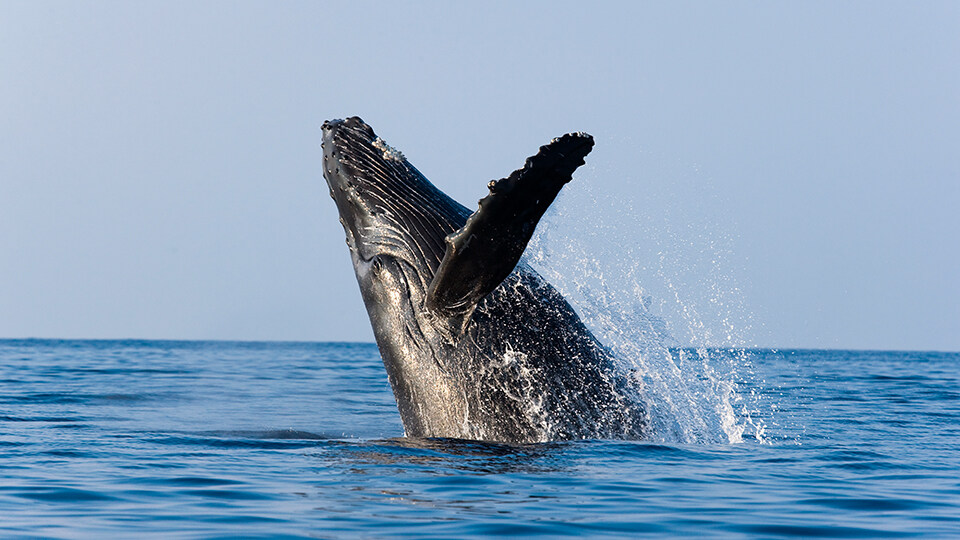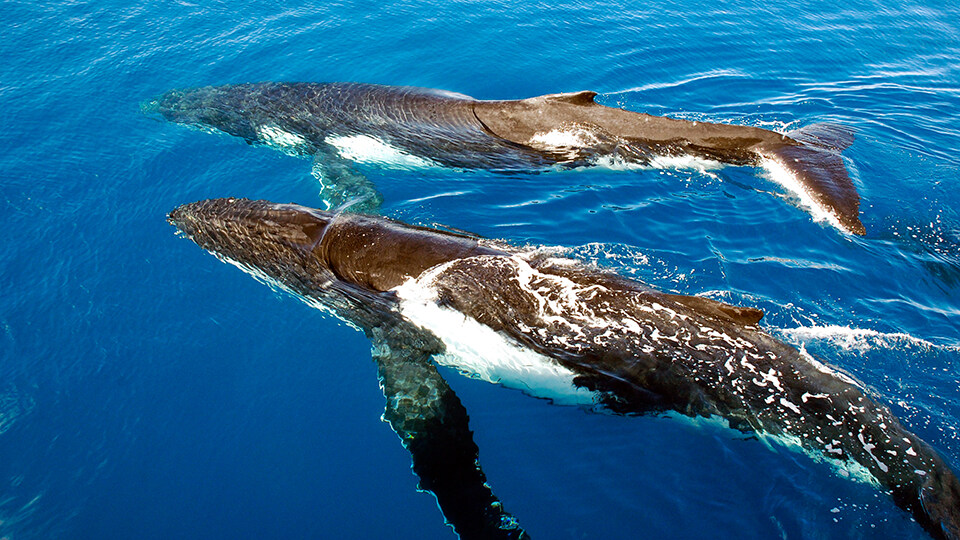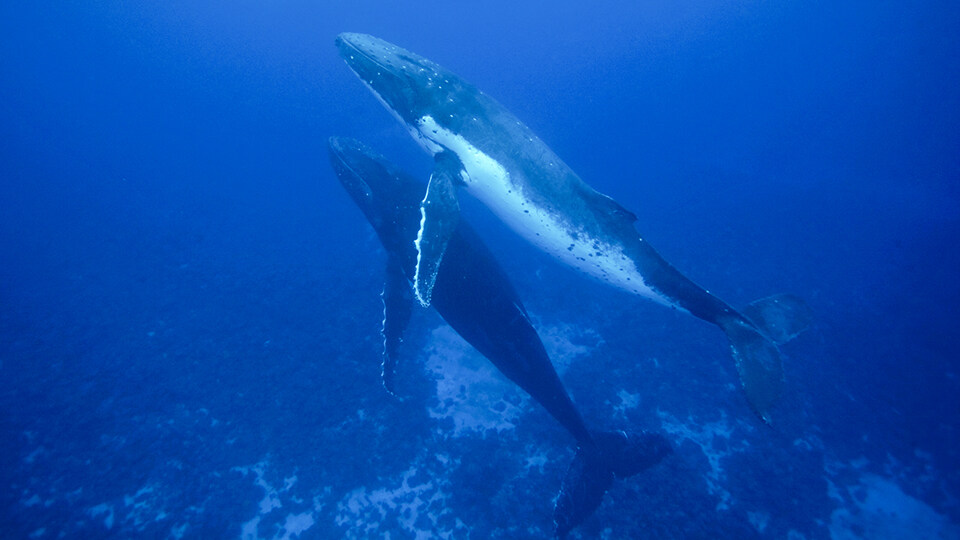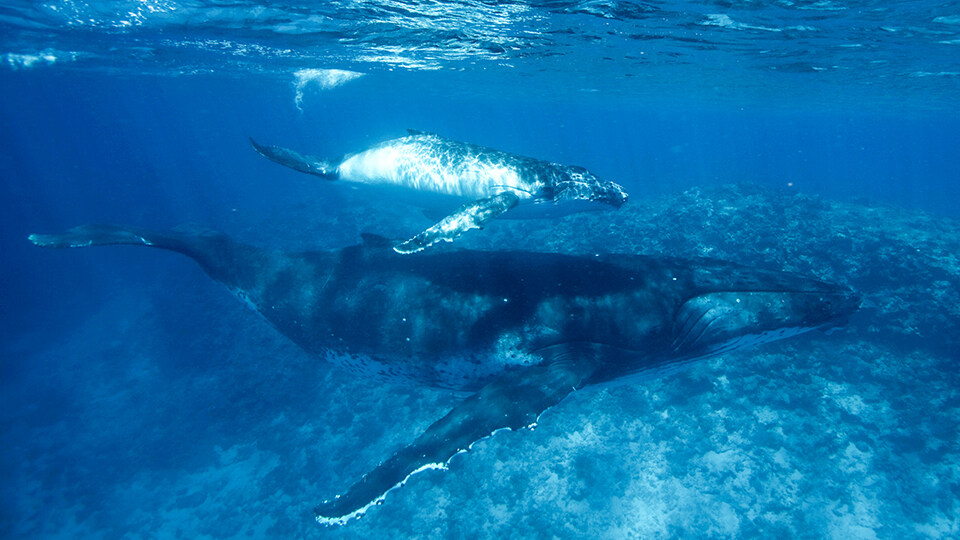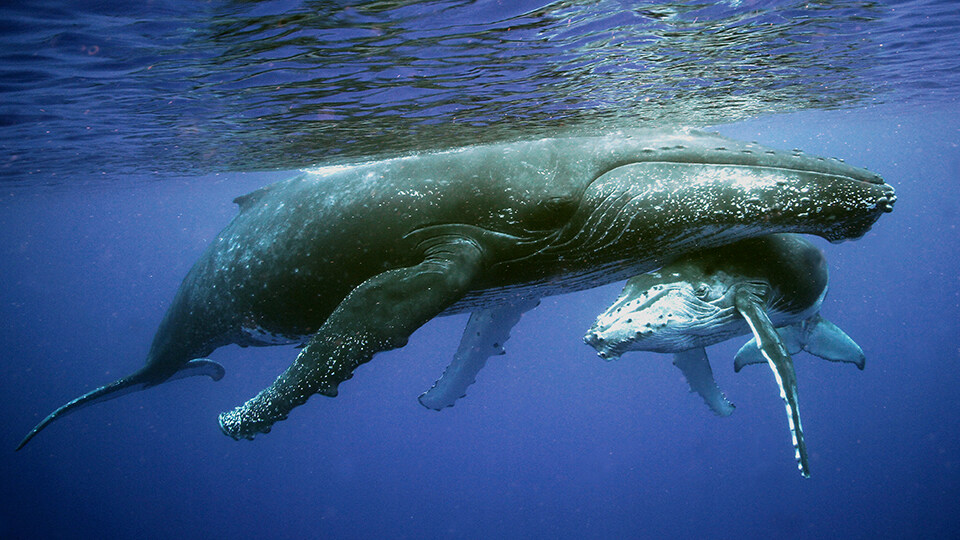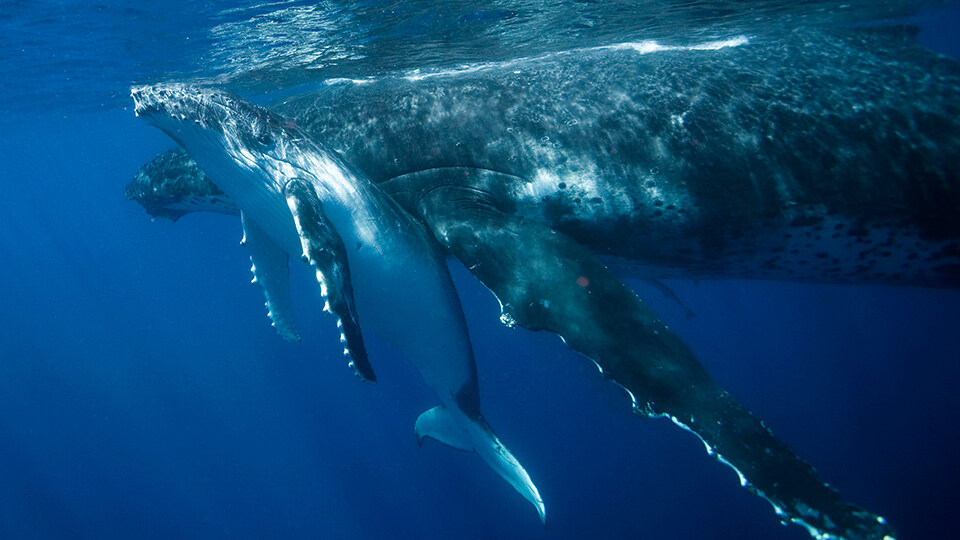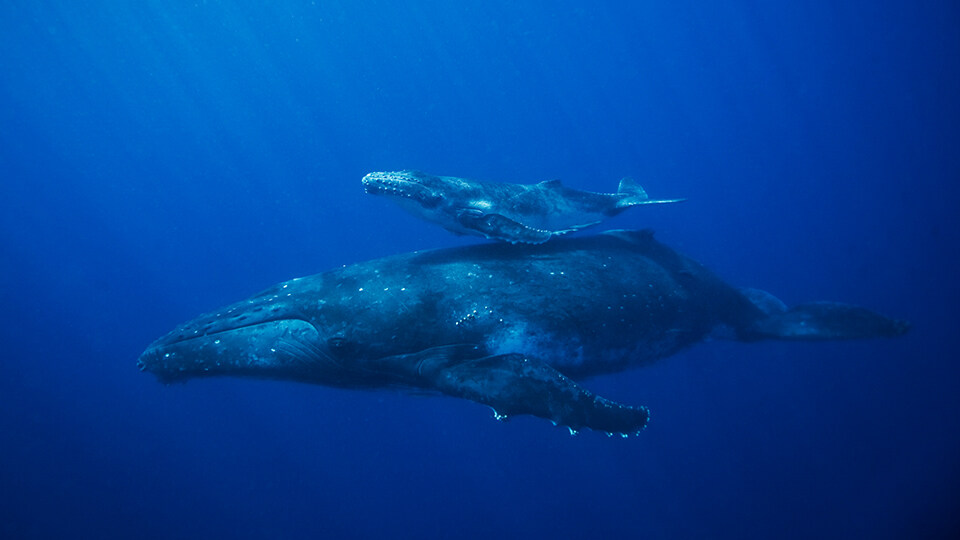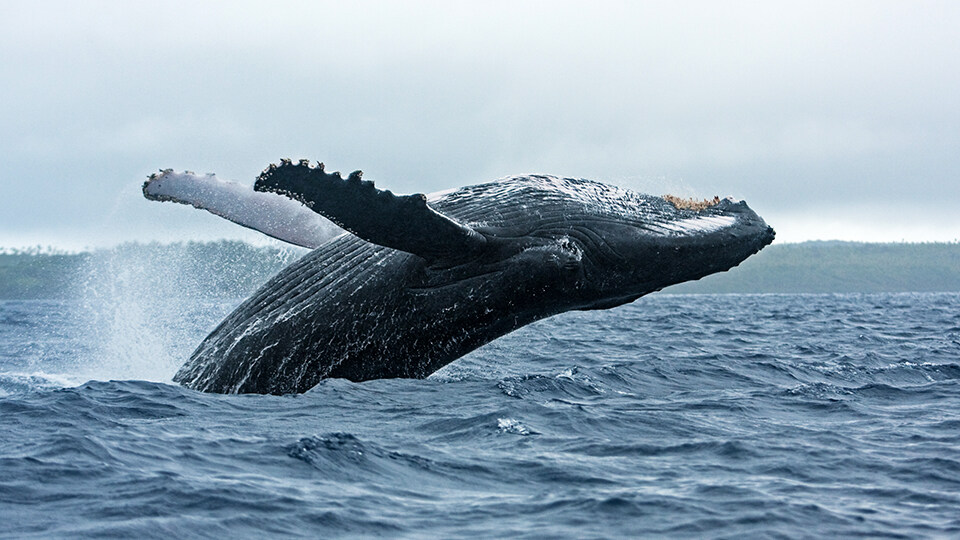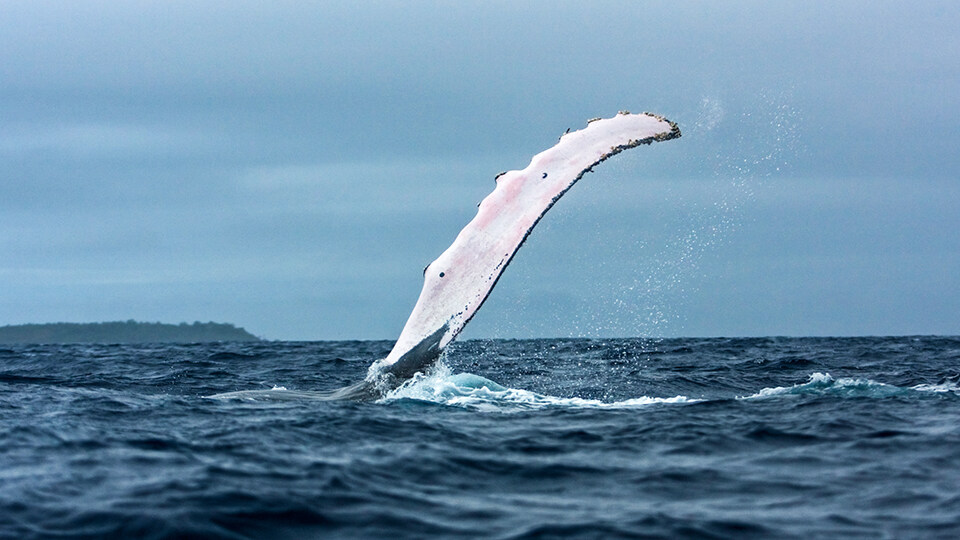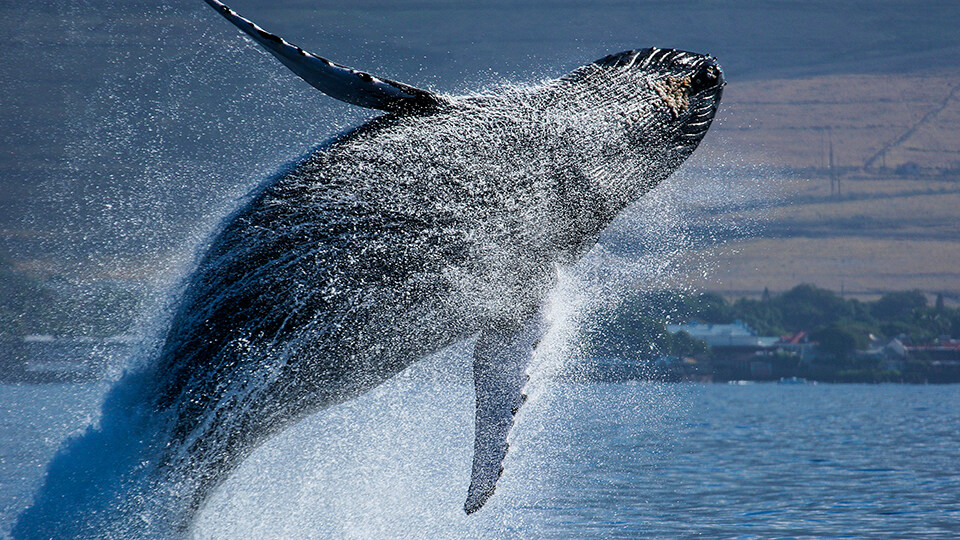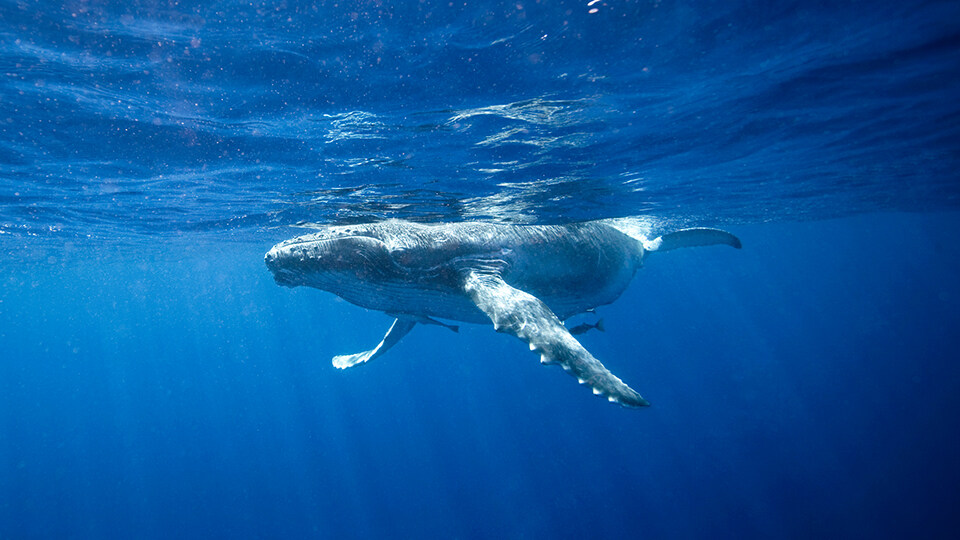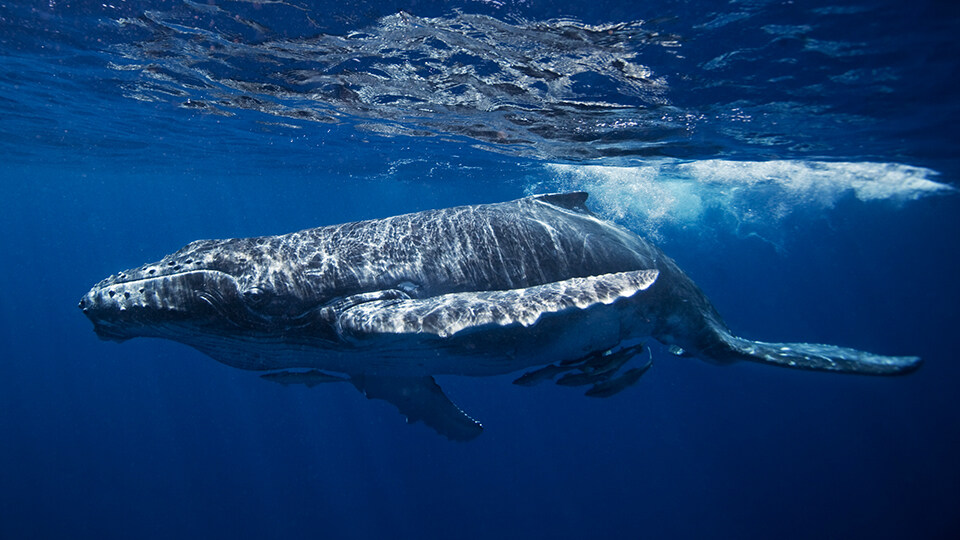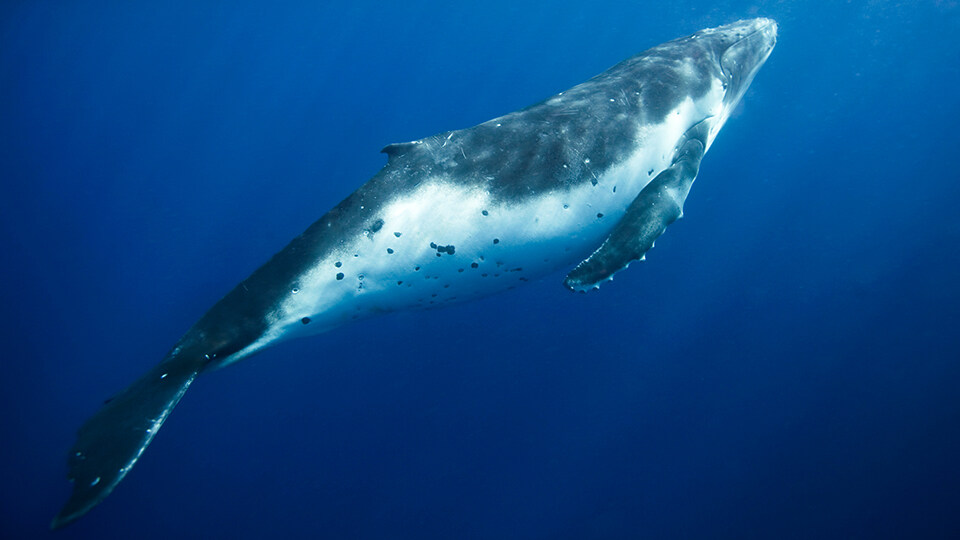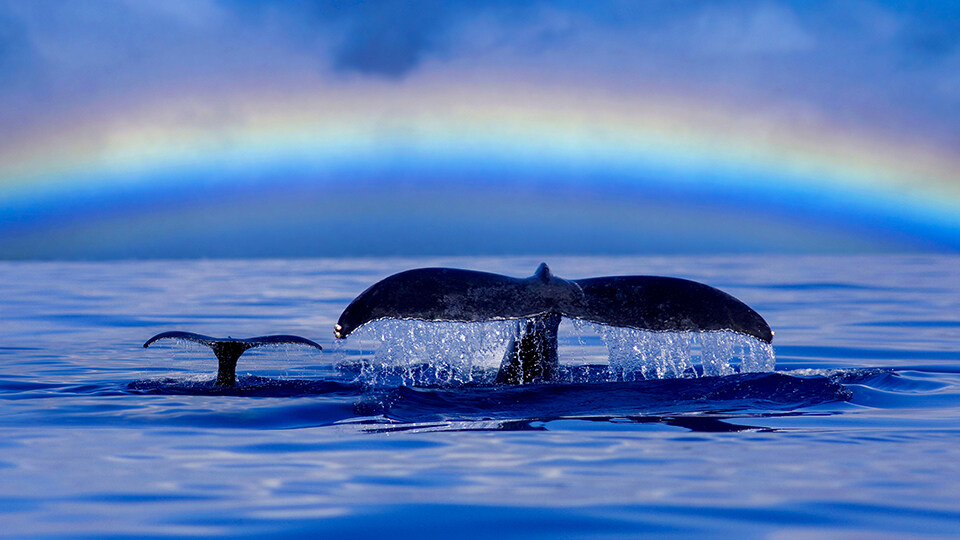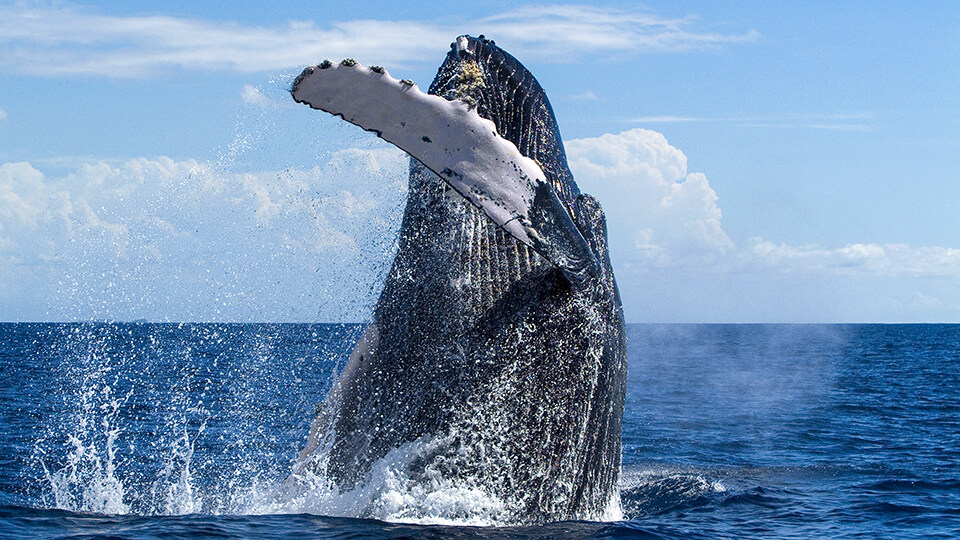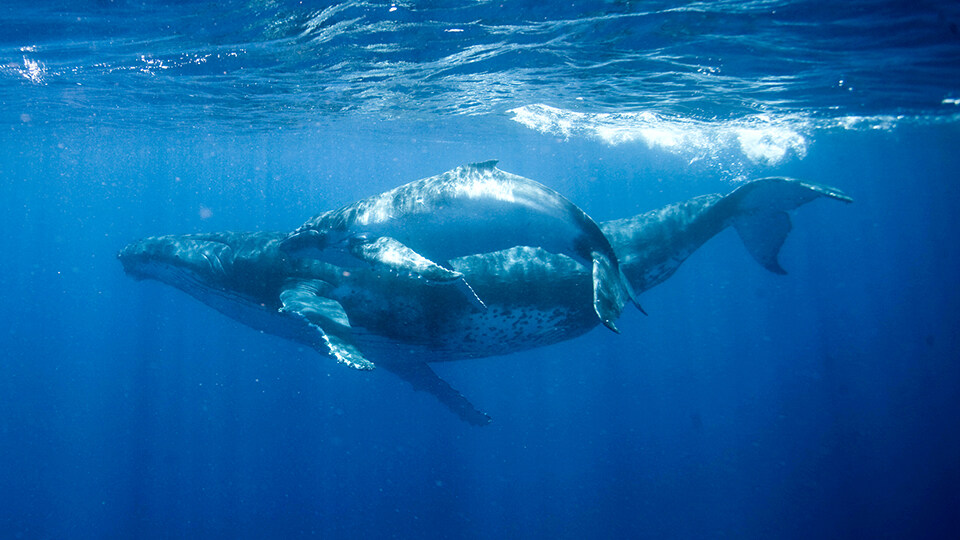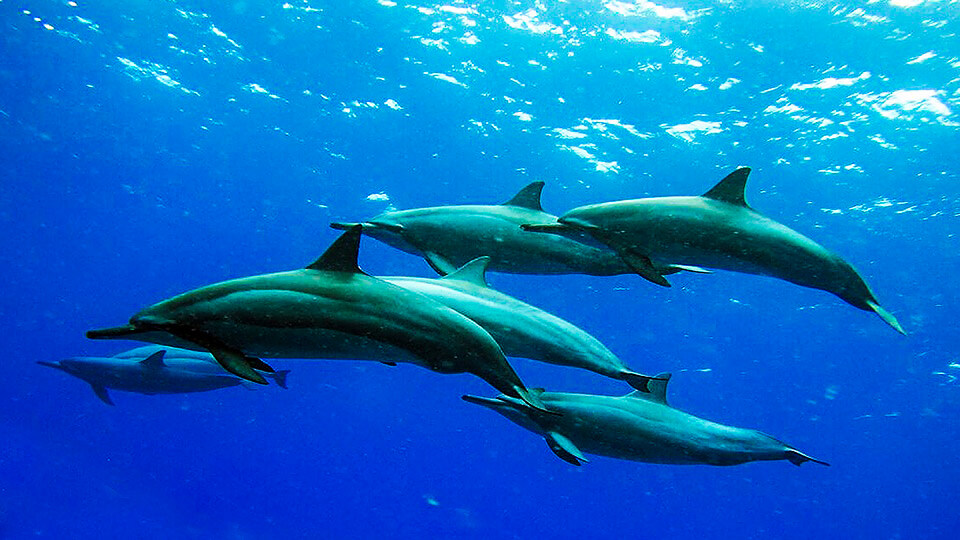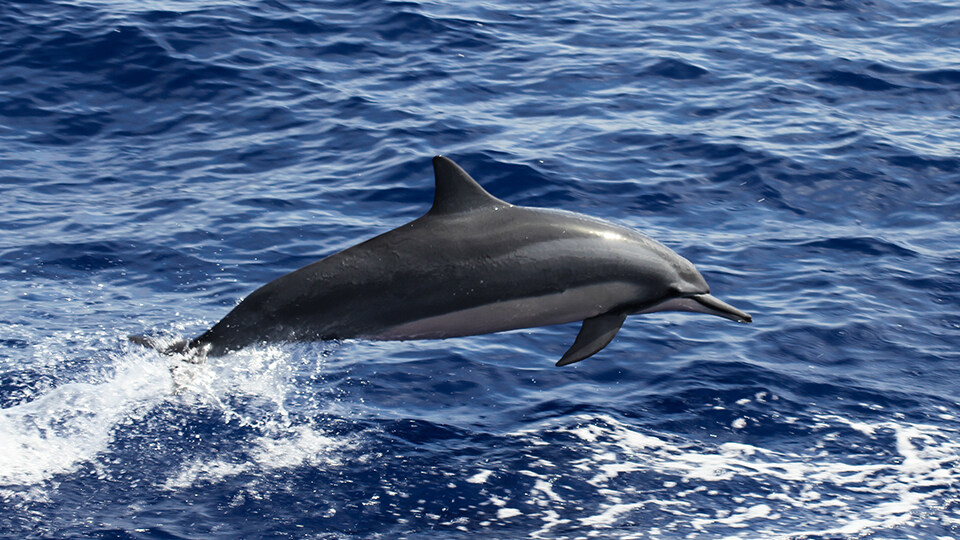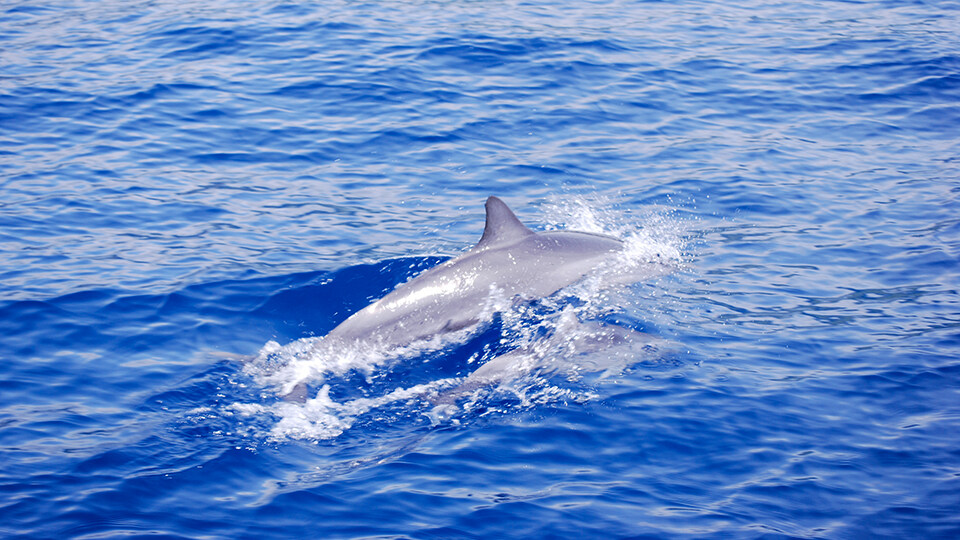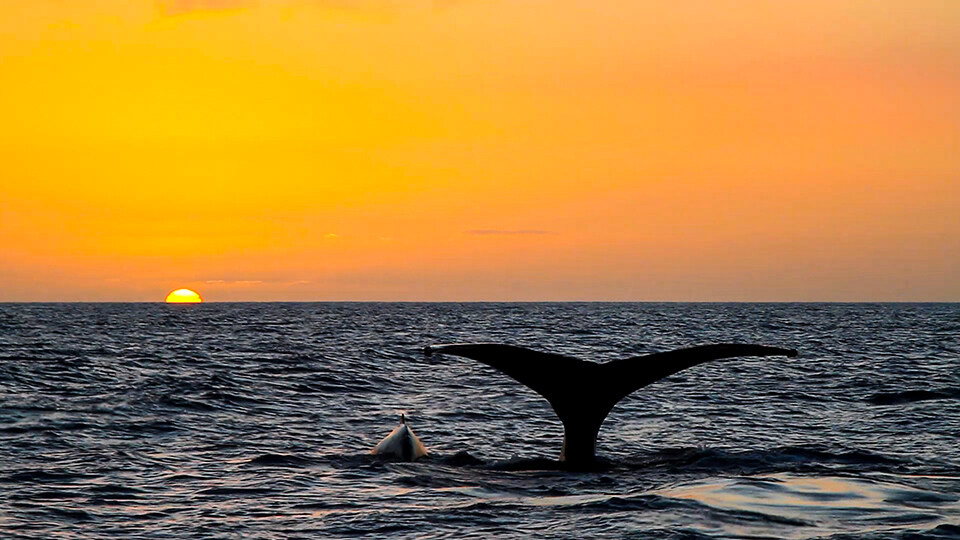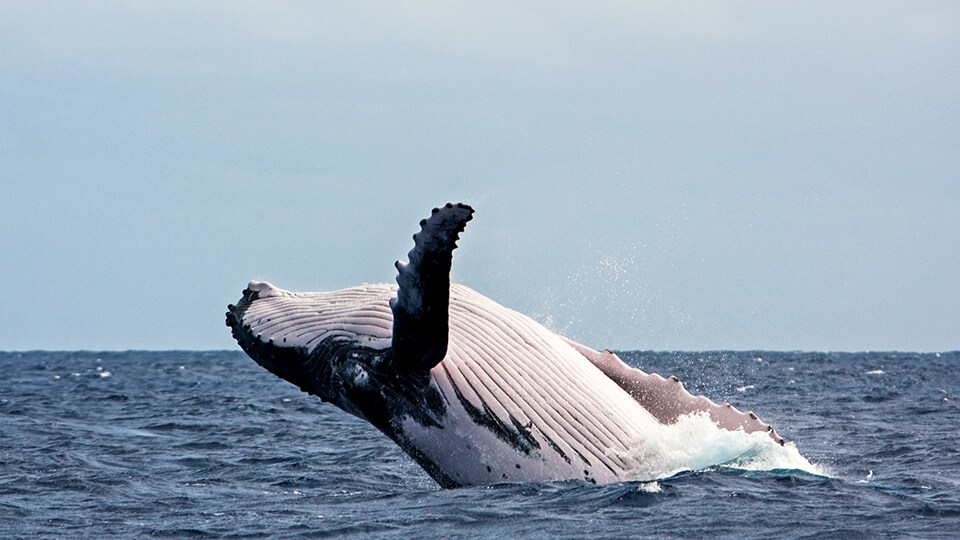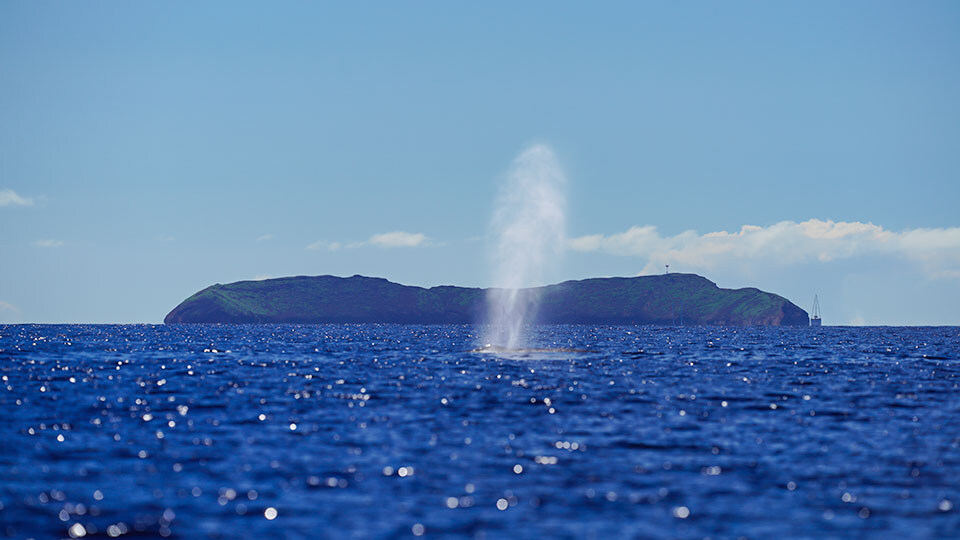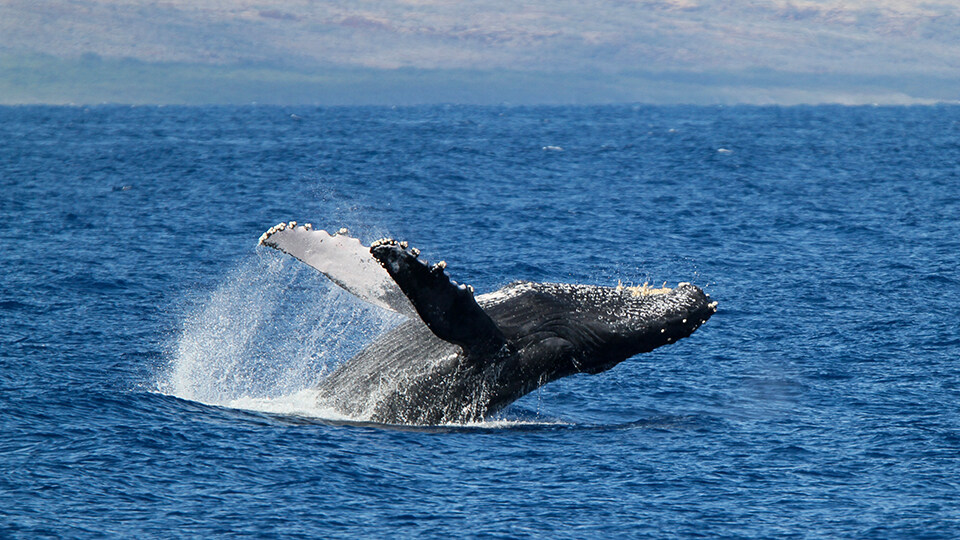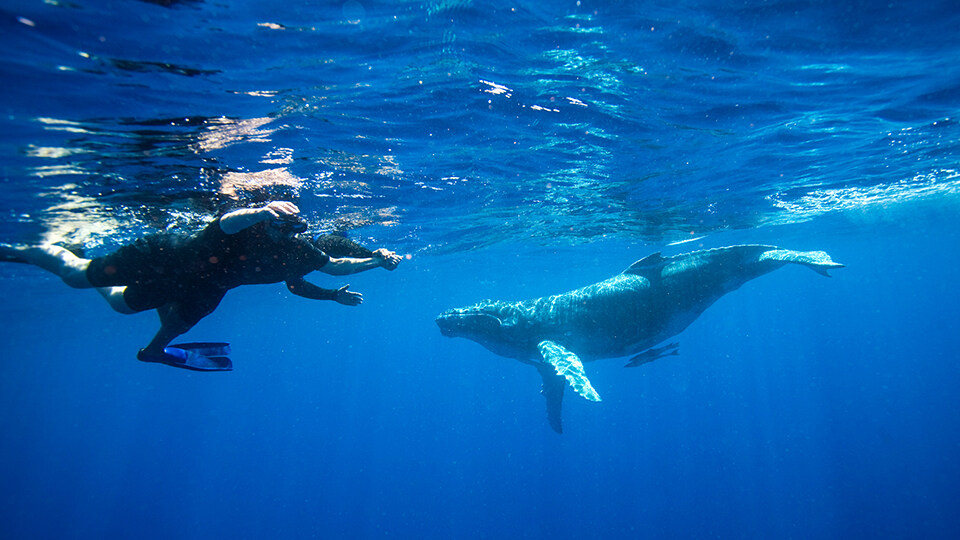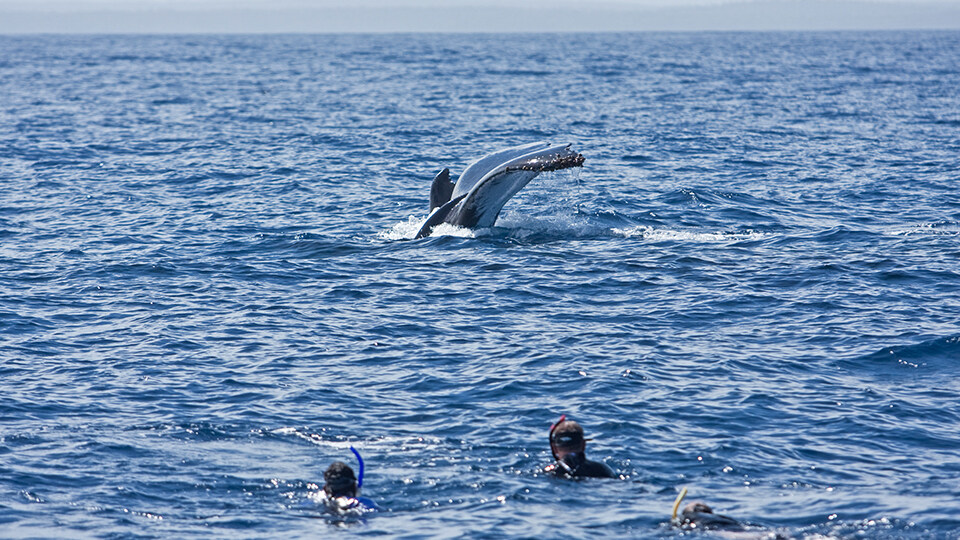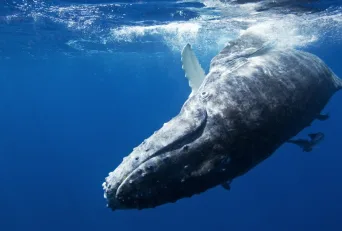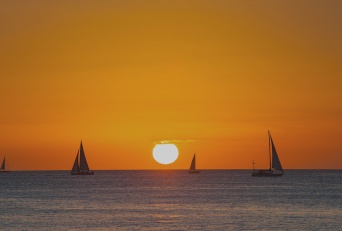Discover why the Humpback Whales visit Hawaii
Discover why the North Pacific Humpback Whales visit Hawaii, and learn whale facts, ocean surface behaviors, and more.
From all of us at Pride of Maui, we look forward to meeting you on one of our Maui whale watching tours. Enjoy and a hui hou!
The North Pacific Humpback Whales Migrate to Maui Every Year
Humpback Whales live in all of the world’s oceans and swim great distances during their seasonal migrations. Some travel 5,000 miles from their summertime feeding locations to their winter mating and calving areas near Hawaii. In the North Pacific Humpback Whale groups, some of the healthiest and strongest whales make the 3,500-mile trip from Alaska to Hawaii in just 28 days.
How Big Are Humpback Whales?
(And Other Humpback Whale Facts)
An adult male humpback whale weighs 40 tons and measures about 60 feet in length. A mature female humpback whale weighs 35 tons and measures about 49 feet in length. Their flippers are about one-third of their body length, giving them high stamina for swimming and the ability to make careful turns while navigating. Each humpback whale’s flukes and dorsal fins have a unique shape and size. They function like fingerprints and allow scientists to identify individuals within a population and observe how the whales interact with other pod members.
(And Other Humpback Whale Facts)
The Whales Breed in
Warm Hawaiian Waters
Adult male humpback whales compete aggressively to mate with mature females. Females reach estrus at around five years of age, while males become sexually mature at about seven. One male typically mates with multiple females of reproductive age during the wintertime. The gestational period is about 11 to 12 months, and the calves will be born in the same place where they were conceived. Since Maui’s whale pods return to their birthplace every year, each generation is born in the same place as their parents.
Warm Hawaiian Waters
See Baby Humpback Whales on Maui
Maui’s baby humpback whales stick closely to their mothers. Their mothers frequently touch them with flippers in an affectionate manner, much like a human mother would with her baby. When a calf is born, it weighs about 1.5 tons. Humpback whales are mammals, and the mothers secrete rich, fatty milk from their mammary glands. Humpback whale milk is 40% to 60% fat, and it’s all that a baby whale will eat for the first six to 10 months. This nursing period helps build the calf’s fat stores so it can survive in the Arctic waters during the annual migration north.
Humpback Whale Behavior
Seen on a Maui Whale Watching Tour
If you set out on a whale watching tour, you’ll have the opportunity to observe humpback whales and how they interact with each other. During the breeding season, the males often gather in a group of up to 20 individuals. They encircle a mature female, showing off their tail slaps and performing other acrobatics. Researchers believe that the males do this as a sort of demonstration of their fitness for mating.
Seen on a Maui Whale Watching Tour
What Is the Whale Song?
Adult male humpback whales create long, loud, and complicated sounds that scientists call the “whale song.” Most researchers believe that the song is related to mating behavior, but they’re not sure whether or not the males sing to show off their dominance and fitness or to set themselves apart from the rest of the group. Some researchers believe that the males who sing do not ever mate. In some ways, these prehistoric wonders are still a huge mystery!
North Pacific Humpback Whale Conservation
The EPA designates the North Pacific Humpback Whale as an endangered species. It has this designation across its entire range per the Endangered Species Conservation Act of 1970. Another law that protects the humpback whale is the Marine Mammal Protection Act of 1972. The International Whaling Commission prohibited commercial whaling in 1985 when it instituted a moratorium on harvesting whales for their oil and body parts.
Marine Life Commonly Seen
with Whales on Maui
In addition to viewing humpback whales when you travel to Hawaii, you’ll have the chance to see more marine life. Many other large mammals travel alongside humpback whales in the beautiful waters surrounding Maui, Hawaii, Oahu, and Kauai. One of the mammals you might see traveling with them is the spinner dolphin. They’re known for their ability to breach and perform up to seven turns or flips in the air before they dip back beneath the surface. Scientists have discovered that spinner dolphins complete their acrobatics to create acoustic signals to other dolphins and marine mammals. They may also perform the flips to get remoras and other parasites off their bodies.
with Whales on Maui
Where Is the Best Place
to View Humpback Whales on Maui?
You can view humpback whales from the southern and western coastlines of Maui. The top spots on Maui from which to view humpback whales are the West Maui and South Maui coastlines. You can see them from the beach, but consider a Maui whale-watching tour for the best view. Experienced captains carefully navigate Maui’s waters so that whale watchers can get close enough to see the exquisite humpback whales in their natural environment, while maintaining a safe distance to prevent any injuries to the whales or other marine life, including the dolphins who often travel alongside the whales.
to View Humpback Whales on Maui?
How to Book a Top Rated
Maui Whale Watching Tour
Pride of Maui’s whale watching tours are top-rated Maui vacation activities. Departing from Maalaea Harbor, our guests experience smooth sailing (without a huge crowd), impeccable service, and many opportunities to see gorgeous island views and Maui marine life.
Maui Whale Watching Tour
Mahalo for reading the Pride of Maui blog!
Mahalo for reading Pride of Maui’s Maui Whale Watching FAQ blog! We look forward to seeing you onboard a Maui whale watching tour with us soon.
